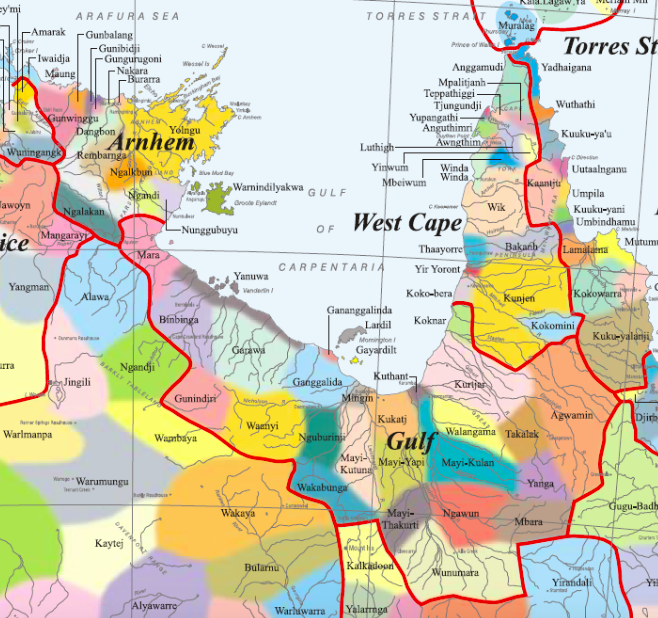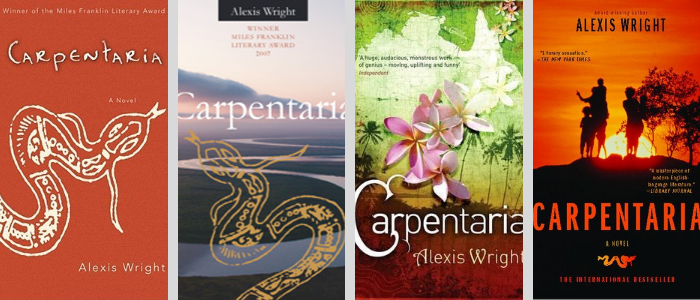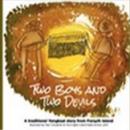AustLit
-
Click here to return to Language and Country > Regions
This collection of informational trails are under development in 2019. They will continually evolve as new works and information about writers are added to BlackWords.
-
'The ancestral serpent, a creature larger than storm clouds, came down from the stars, laden with its own creative enormity. It moved graciously - if you had been watching with the eyes of a bird hovering in the sky far above the ground. Looking down at the serpent's wet body, glistening from the ancient sunlight, long before man was a creature who could contemplate the next moment in time. It came down those billions of years ago, to crawl on its heavy belly, all around the wet clay soils in the Gulf of Carpentaria.' (Wright, Alexis, 2006:1)
The Gulf of Carpentaria is a large bay shared by Northern Territory and Queensland in the north central Australia. Arnhem Land and Cape York on its western and eastern shores. Aboriginal lands stretch along its shores, including Groote Eylandt, Mornington Island in the Sir Edward Pellew group which extends to the shores to Manangoora in the east on the Wearyan river (Northern Territory, Images of the World. 2016) The Gulf country region that surrounds the Gulf of Carpentaria in north western Queensland and eastern Northern Territory on the north coast of Australia (Savanna Explorer, http://www.savanna.org.au). contains towns such as Burketown, Normanton, Doomadgee, Normanton, Karumba and Boroloola, Boulia, Mount Isa, Cloncurry, Richmond and Julia Creek. (Language Resources for Mount Isa and North-West Queensland, 2016)
This trail presents stories, songs and songlines, writers and storytellers concerning Aboriginal language groups in the region of the Gulf of Carpentaria, namely the Yanyuwa,Garawa, Waanyi, Mara, Anindilyakwa from Groote Eylandt, Lardil, Yangkaal, and Kaiadilt from Mornington Island and Bentinck Island; Kurtijar, Agwamin and Yanga from the Normanton region; Kalkadoon, including the those from the Cloncurry region.
Readers are advised to explore resources available at the Australian Institute for Aboriginal and Torres Strait Islander Studies (AIATSIS) website and the zoomable map of Indigenous Australia, developed as a part of the Encyclopaedia of Aboriginal Australia.
-
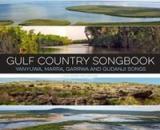 Image courtesy of publisher's website.See full AustLit entry
Image courtesy of publisher's website.See full AustLit entry'The Gulf Country Songbook, is an immersive showcase of some of the many songs composed in Yanyuwa, Marra, Garrwa and Gudanji languages in the last 100 years. There are songs of land rights claims, of the maranaja – ‘dugong hunters of excellence’, of paddling a canoe on the sea at night, of boundary riders on a pastoral station, and Ancestral Beings journeying across country' (Source: Waralungku Arts Centre Website)
(...more) -
Little Eva at Moonlight Creek and Other Aboriginal Song Poems edited by Martin Duwell and R. M. W. Dixon
 Cover image courtesy of publisher.Little Eva at Moonlight Creek is the sequel to the anthology of Aboriginal song poems, The Honey-Ant Men's Love Song. It samples the literary traditions of four language groups...Yanyuwa songs depicting particular events such as the 1942 crash of the B-25 bomber Little Eva, Ngurlu songs from Broome, Wangkangurru songs with mixed themes and Yolngu songs about birds from the Wora and Liyagawumirr clans. Each song is presented in its original language and in translation. Introductions place songs within their cultural context with interpretations offered by singers. (...more)See full AustLit entry
Cover image courtesy of publisher.Little Eva at Moonlight Creek is the sequel to the anthology of Aboriginal song poems, The Honey-Ant Men's Love Song. It samples the literary traditions of four language groups...Yanyuwa songs depicting particular events such as the 1942 crash of the B-25 bomber Little Eva, Ngurlu songs from Broome, Wangkangurru songs with mixed themes and Yolngu songs about birds from the Wora and Liyagawumirr clans. Each song is presented in its original language and in translation. Introductions place songs within their cultural context with interpretations offered by singers. (...more)See full AustLit entry -
 Image courtesy of Allen & UnwinSee full AustLit entry
Image courtesy of Allen & UnwinSee full AustLit entryThis is 'John Bradley's compelling account of three decades living with the Yanyuwa people of the Gulf of Carpentaria and of how the elders revealed to him the ancient songlines of their Dreaming.
At twenty John Bradley was sent to teach Aboriginal children in a school at remote Borroloola, on the Gulf of Carpentaria in far north Australia. But it is the teacher who is educated by the Yanyuwa elders and their families. Over three decades he learns their language and their country, becoming intimately drawn into other ways of being, both practical and spiritual.
(...more) -
The Sea Turtle and the Osprey by Wurdaliya Clan of the Yanyuwa & Marra People, John Bradley, Brent D. McKee
 Screen cap from opening creditsThe Osprey lands at Rrawali and leaves for Mindarra on West Island, where he encounters the Sea Turtle Dreaming. He chases the Sea Turtles from island to island, killing many of them along the way. His pursuit of the Sea Turtles sculpts the form of the landscapes from West Island to Watson Island to the tip of the North Island. (...more)See full AustLit entry
Screen cap from opening creditsThe Osprey lands at Rrawali and leaves for Mindarra on West Island, where he encounters the Sea Turtle Dreaming. He chases the Sea Turtles from island to island, killing many of them along the way. His pursuit of the Sea Turtles sculpts the form of the landscapes from West Island to Watson Island to the tip of the North Island. (...more)See full AustLit entrySee other stories in this collection of animations: Marlukarra Ngarrkadabawurr: Karnanganjanyi (Emu Hunters of Excellence), Purdiwan (Pretty One), The Groper (a-Kuridi),The Dreamings from the Saltwater Country (Narnu-Yuwa ki Anthaa),The Chicken Hawk and the Crow (Malarrkarrka kulu a-Wangka),Dugong Hunters (li-Maramaranja) and The Brolga (Kurdarrku).
-
The Garawa language group are the people of the Gulf of Carpentaria region, north-west Queensland, predominantly the coastline adjacent Mornington and Bentinck Islands and Forsyth Islands. Their neighboring language groups are the Yanuwa, Ganggalida, Waanyi and Binbinga peoples, they are closely related to the Yanuwa who occupy the coast. (Gangalidda and Garawa Peoples sighted 16 December 2016; McKenzie and Horton, 2016)
-
-
The Magic Snake : Being a Group of Stories for Children Concerning the Habits, Customs, Beliefs, Ceremonies, Corroborees and Legends of the Australian Aborigines by William Linklater and edited by Mavis Mallinson
 This image has been sourced from online.See full AustLit entry
This image has been sourced from online.See full AustLit entryBilly Linklater was the author of Gather No Moss, a Northern Territory classic. He wrote of the Territory when he was young. The Magic Snake is his collected legends of the Warramunga tribe among whom he lived and worked for many years. A forgotten classic of the North. (Source: Hesperian Press website)
(...more) -
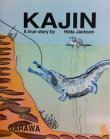 This image has been sourced from front coverSee full AustLit entry
This image has been sourced from front coverSee full AustLit entry"KAJIN' is a true story told in Garawa by Hilda Jackson of Robinson River, Northern Territory. (Source: Postface,back cover verso)
(...more) -
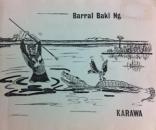 This image has been sourced from front cover.See full AustLit entry
This image has been sourced from front cover.See full AustLit entryA story about a friendship between a man and a cockatoo.
(...more) -
The Waanyi people of the Gulf region who are neighbours of the Garawa, Ganggalida, Nguburinji, Wakaya, Wambaya and Gunindiri peoples. They belong to the Nicholson river that was created by Birinya (water rat). Waanyi share a similar language to the Garawa (McKenzie and Horton, 2016)
-
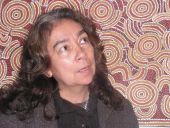 Photo courtesy of the author.See full AustLit entry
Photo courtesy of the author.See full AustLit entryAlexis Wright, activist and award-winning writer, is from the Waanji people from the highlands of the southern Gulf of Carpentaria. After her father, a white cattleman, died when she was five, she grew up with her mother and grandmother in Cloncurry, Queensland. She has worked extensively in government departments and Aboriginal agencies across four Australian states and territories as a professional manager, educator, researcher, and writer.
Wright was coordinator of the Northern Territory Aboriginal Constitutional Convention in 1993 and wrote 'Aboriginal Self Government' for Land Rights News, later quoted in full in Henry Reynolds's Aboriginal Sovereignty (1996).
-
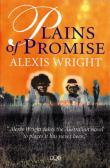 Image courtesy of UQPSee full AustLit entry
Image courtesy of UQPSee full AustLit entry'In this brilliant debut novel, Alexis Wright evokes city and outback, deepening our understanding of human ambition and failure, and making the timeless heart and soul of this country pulsate on the page. Black and white cultures collide in a thousand ways as Aboriginal spirituality clashes with the complex brutality of colonisation at St Dominic's mission. With her political awareness raised by work with the city-based Aboriginal Coalition, Mary visits the old mission in the northern Gulf country, place of her mother's and grandmother's suffering.
(...more) -
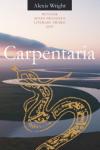 Image courtesy of Giramondo PublishingCarpentaria's portrait of life in the precariously settled coastal town of Desperance centres on the powerful Phantom family, whose members are the leaders of the Pricklebush people, and their battles with old Joseph Midnight's tearaway Eastend mob on the one hand, and the white officials of Uptown and the neighbouring Gurfurrit mine on the other. Wright's storytelling is operatic and surreal: a blend of myth and scripture, politics and farce. The novel is populated by extraordinary characters - Elias Smith the outcast saviour, the religious zealot Mozzie Fishman, leader of the holy Aboriginal pilgrimage, the murderous mayor Stan Bruiser, the ever-vigilant Captain Nicoli Finn, the activist and prodigal son Will Phantom, and above all, Angel Day the queen of the rubbish-dump, and her sea-faring husband Normal Phantom, the fish-embalming king of time - figures that stand like giants in this storm-swept world. (...more)See full AustLit entry
Image courtesy of Giramondo PublishingCarpentaria's portrait of life in the precariously settled coastal town of Desperance centres on the powerful Phantom family, whose members are the leaders of the Pricklebush people, and their battles with old Joseph Midnight's tearaway Eastend mob on the one hand, and the white officials of Uptown and the neighbouring Gurfurrit mine on the other. Wright's storytelling is operatic and surreal: a blend of myth and scripture, politics and farce. The novel is populated by extraordinary characters - Elias Smith the outcast saviour, the religious zealot Mozzie Fishman, leader of the holy Aboriginal pilgrimage, the murderous mayor Stan Bruiser, the ever-vigilant Captain Nicoli Finn, the activist and prodigal son Will Phantom, and above all, Angel Day the queen of the rubbish-dump, and her sea-faring husband Normal Phantom, the fish-embalming king of time - figures that stand like giants in this storm-swept world. (...more)See full AustLit entry -
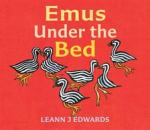 Cover image courtesy of publisher.See full AustLit entry
Cover image courtesy of publisher.See full AustLit entry'On Saturdays I visit Auntie Dollo.
''What would you like to do today?' she says. 'Do you want to help me make some feather flowers?'
'A vibrant story about connecting with culture and family.' (Publication summary)
(...more) -
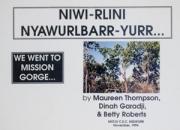 This image has been sourced from Living Archive of Aboriginal Languages websiteSee full AustLit entry
This image has been sourced from Living Archive of Aboriginal Languages websiteSee full AustLit entryThis story is about a school excursion from Mutju C.E.C. Ngukurr to look for bush tucker.
(...more) -
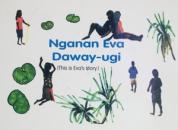 This image has been sourced from Living Archive of Aboriginal Languages websiteSee full AustLit entry
This image has been sourced from Living Archive of Aboriginal Languages websiteSee full AustLit entryEva recalls growing up in Ngukurr and seeing mermaids.
(...more) -
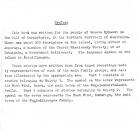 This image has been sourced from LAAL websiteSee full AustLit entry
This image has been sourced from LAAL websiteSee full AustLit entry'This book was written for the people of Groote Eylandt in the Gulf of Carpentaria, in the Northern Territory of Australia...these stories were written down from taped recordings made by representatives of each of the main family groups, and have been illustrated the appropriate men...(Source: Preface)
(...more) -
Crocodile and Blue Tongue Lizard : A Story from Groote Eylandt written by Gula Lalara, compiled by Jan Teeagle Kapetas and illustrated by children from Umbakumba School, Angurugu School and Bickerton Island School
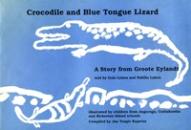 This image has been sourced from LAAL websiteSee full AustLit entry
This image has been sourced from LAAL websiteSee full AustLit entry'A long time ago crocodile and blue tongue lizard both made houses...'
(...more) -
Yirruwa Yirrilikenuma-langwa : When We Go Walkabout written by Rhoda Dugururru Lalara and illustrated by Alfred Lalara
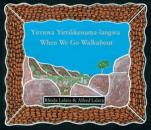 Image courtesy of publisher's website.See full AustLit entry
Image courtesy of publisher's website.See full AustLit entry'When we go walkabout, what do we see? Up in a tree there is something flapping its wings at us. Duwedirra! Cockatoo! Down in the river we see something staring at us. Dingarrbiya! Crocodile! Back home there is someone waiting for us ... Dungkwarrika! Grandma! A beautiful story for the very young that brings to vivid life the unique world of Groote Eylandt.' (Source: Publishers website)
(...more) -
Mornington Island (also known as Gununa) is one of the largest islands of the Wellesley Islands located in the Gulf of Carpentaria and is owned by the traditional owners the Lardil people. To the south of Mornington Island are Denham Island and several smaller islands that were home to the Yankaal people. In the South Wellesley Islands is Bentinck Island which was the home of the Kaiadilt people. Nearly all of the Lardil, Yankaal and Kaiadilt people live on Mornington Island, in the township of Gununa, with people that had originally came from the mainland, mostly the Gangalida people (Ozoutback. sighted 16 December 2016)
-
Squid and Rat: A Traditional Lardil Story edited by Cassy Nancarrow and illustrated by Year 1 students at Mornington Island State School
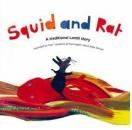 Image courtesy of publisher's website.See full AustLit entry
Image courtesy of publisher's website.See full AustLit entry'Squid gives his friend Rat a lift across the water on his back, but Rat laughs at Squid's tentacles. This version of the Squid and Rat story is based on a story told by John Williams, with additions from old recordings of Kenneth Jacob and Gully Peters telling the story in Lardil and creole.'
(...more) -
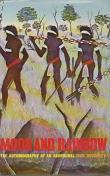 This image has been sourced from online.See full AustLit entry
This image has been sourced from online.See full AustLit entry'The author is Lardil man from Mornington Island; comments on conception beliefs, birth, food plants, camp life, Creation myth, myths on origin of death, Thuwathu the Rainbow Serpent, marriage rules, relations with Mission staff, hunting & fishing, stellar myths, dugong hunting, wild bee myth; initiation myth, describes initiation ceremony, subincision, secret Damin language; flood ceremony, 22 lines of rain stopping song (with free translation), story of Warrenby, sorcery and sorcerers, clay as medicine, love magic, moon legend, death & mourning, burial, inquest, spirit beliefs; relations with Bentinck Island (Kaiadilt) people, stories of early settlement of Sweers Island; work on cattle stations & as deckhand, encouragement to work on bark painting' (Source: Online)
(...more) -
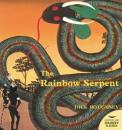 This image has been sourced from onlineThis is the Aboriginal legend of the formation of the landscape on Cape York Peninsula. Goorialla, the Rainbow Serpent, was looking for his own tribe. On his travels he formed mountains, a deep gorge, and a lily lagoon called Minalinka. Eventually he found his own people. He showed them how to make headdresses of feathers and how to dance. When a big storm blew up, all the people built shelters except the Bil-bil boys. When they sought shelter in Goorialla's humpy he opened his mouth and swallowed them. (...more)See full AustLit entry
This image has been sourced from onlineThis is the Aboriginal legend of the formation of the landscape on Cape York Peninsula. Goorialla, the Rainbow Serpent, was looking for his own tribe. On his travels he formed mountains, a deep gorge, and a lily lagoon called Minalinka. Eventually he found his own people. He showed them how to make headdresses of feathers and how to dance. When a big storm blew up, all the people built shelters except the Bil-bil boys. When they sought shelter in Goorialla's humpy he opened his mouth and swallowed them. (...more)See full AustLit entry -
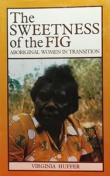 This image has been sourced from online.A biographical insight into the life of Elsie Roughsey and collaboration with a few Aboriginal women of Mornington Island. These stories highlight the psychological, social and cultural change during the latter third of the twentieth century. (...more)See full AustLit entry
This image has been sourced from online.A biographical insight into the life of Elsie Roughsey and collaboration with a few Aboriginal women of Mornington Island. These stories highlight the psychological, social and cultural change during the latter third of the twentieth century. (...more)See full AustLit entry -
 This image has been sourced from online.See full AustLit entry
This image has been sourced from online.See full AustLit entry'Diin yuunymen ngalu, dilanthaarr barguwenku wanginjitharr. (This is an old-time story about when people used to go about with nets, long ago.) This story tells of a group of men hunting dugong with giant nets at the mouth of Sandalwood River on Mornington Island. It is told in both English and Lardil.' (Source: Online)
(...more) -
Turtle and Wallaby: Barun Bana Garnjin by Phil Jack and illustrated by Mornington Island State School
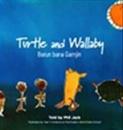 Image courtesy of publisher's website.See full AustLit entry
Image courtesy of publisher's website.See full AustLit entry'Turtle gives wallaby a lift across the water and in return wallaby helps turtle escape from hunters. The story in this book is not a traditional Lardil story, but it has been told at Mornington Island for a long time now. ' (Source: Online)
(...more) -
Mission times by Dolly Loogatha, compiled by Cassy Nancarrow and illustrated by Mornington Iland Stte School
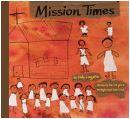 This image has been sourced from online.See full AustLit entry
This image has been sourced from online.See full AustLit entry'In the 1940s Dolly was a girl in the dormitory on Mornington Island. Then as a teenager she was sent to the mainland to work as a domestic on several stations. She tells of some of the things that happened - some funny, some shocking, some sad.' (Source: Online)
(...more) -
-
-
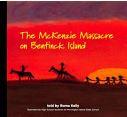 This image has been sourced from online.See full AustLit entry
This image has been sourced from online.See full AustLit entry'In 1911 a man named McKenzie obtained a government lease which, according to Queensland law, gave him title hold over all of Sweers Island and a large portion of Bentinck Island. In the 1980s Roma Kelly told linguist Nicholas Evans about the brutal massacre led by McKenzie in 1918 at Rukuthi, for which he was never punished.' (Source: Online)
(...more) -
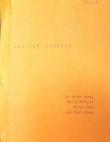 This image has been sourced from front coverSee full AustLit entry
This image has been sourced from front coverSee full AustLit entry'Traditional stories of birds and reptiles and stories after European contact including Wamakee Massacre' (Source: Mura Collection Catalogue, AIATSIS)
(...more) -
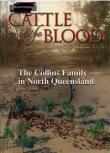 This image has been sourced from online.See full AustLit entry
This image has been sourced from online.See full AustLit entry'In 1862 grass-seekers and brothers Charles and Thomas Collins secured the license for a pastoral run in North Queensland. Since that time there has been a connection between the Collins family and the cattle industry, unbroken for over 140 years. This is their story.' (Source: TROVE)
(...more) -
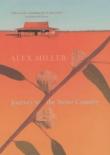 This image has been sourced from online.'Betrayed by her husband, Annabelle Beck retreats from Melbourne to her old family home in tropical North Queensland where she meets Bo Rennie, one of the Jangga tribe. Intrigued by Bo's claim that he holds the key to her future, Annabelle sets out with him on a path of recovery that leads back to her childhood and into the Jangga's ancient heartland, where their grandparents' lives begin to yield secrets that will challenge the possibility of their happiness together.' - Publisher's blurb. (...more)See full AustLit entry
This image has been sourced from online.'Betrayed by her husband, Annabelle Beck retreats from Melbourne to her old family home in tropical North Queensland where she meets Bo Rennie, one of the Jangga tribe. Intrigued by Bo's claim that he holds the key to her future, Annabelle sets out with him on a path of recovery that leads back to her childhood and into the Jangga's ancient heartland, where their grandparents' lives begin to yield secrets that will challenge the possibility of their happiness together.' - Publisher's blurb. (...more)See full AustLit entry -
Kalkadoon people are of the Eyre region between the Georgina and Corella Rivers, they neighbour the Wakabunga, Mayi-Thakurti, Wunumara, Yanda, Yallarrnga, Warluwarra and Bularnu peoples. And, were also touched upon by the Pitta Pitta people of boulia (Mckenzie and Horton, 2016)
-
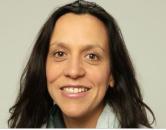 Film Director and Writer Rachel PerkinsSee full AustLit entry
Film Director and Writer Rachel PerkinsSee full AustLit entryAs the daughter of Charles Perkins, Rachel Perkins grew up in a politically active family. She regularly took part in demonstrations and dicussions on Aboriginal affairs. Perkins began her media career in Alice Springs working for the Central Australian Aboriginal Media Association (CAAMA). In 1991 she moved to Sydney to work for SBS Television where she produced a number of documentaries including the award-winning Blood Brothers.
In 1995, Perkins was awarded the first Indigenous scholarship to study producing at the Australian Film, Television and Radio School (AFTRS).
-
See full AustLit entry
Charles Perkins was an Aboriginal activist who spent most of his life fighting for equality for Indigenous Australians. His skin grouping was Purula in the Arrente community. His totem was the Caterpillar.
For most of Perkins' childhood, he lived on a reserve near Alice Springs. When he turned ten he went to St Francis House in Adelaide to study at Le Fevre Boys Technical School. He was at St Francis House the same time John Moriarty lived there.
-
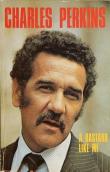 This image has been sourced from online.See full AustLit entry
This image has been sourced from online.See full AustLit entryAn autobiography of Australia's first Aboriginal university graduate.
(...more) -
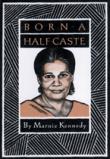 Image courtesy of Publisher websiteSee full AustLit entry
Image courtesy of Publisher websiteSee full AustLit entry'Marnie Kennedy's story begins with her birth in 1919 on the banks of Coppermine Creek in Western Queensland. She tells of her journey to Palm Island where she grew up 'under the act' which dominated the lives of Aboriginal people in Queensland.
The book includes descriptions of Kennedy's hard working life on the cattle stations throughout the north and the people she encountered there. She wrote her story so that white people would come to know and understand the plight of her people by reading of her own life as a 'half-caste'.
(...more) -
 Scott PrinceSee full AustLit entry
Scott PrinceSee full AustLit entryScott Prince a member of the Brisbane Broncos Rugby League Team, debuted his writing career in 2013, with the release of his first book Deadly D and Justice Jones: Making the Team. In 2013, Scott and his co-author, Dave Hartley had also been awarded the Kuril Dhagun Prize in the State Library of Queensland's Black&Write! Indigenous Writing Fellowships. (Source: The North West Star newspaper, and the State Library of Queensland websites)
-
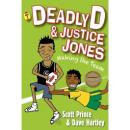 Image courtesy of Publisher websiteSee full AustLit entry
Image courtesy of Publisher websiteSee full AustLit entry'Eleven-year-old Dylan has to move from Mt Isa to Brisbane and he’s not happy. But as soon as he gets to Flatwater State School he finds a former Mount Isa Miner’s footy supporter in his principal and a ‘Broncos tragic’ as a teacher. He also makes a friend in Justice Jones and an enemy in Jared Knutz. Dylan is cursed with an abnormality transforming him into a fully-grown man whenever he gets angry. Always a worry, the ‘curse’ proves to be a blessing in the city when his alter ego attracts the interest of the Broncos during a class excursion to watch the team train.
(...more) -
 This image has been sourced from online.See full AustLit entry
This image has been sourced from online.See full AustLit entry'Records the author's knowledge of the legends, customs and life of the Australian Aborigines gained from her childhood on "Mooraberrie", the family cattle station in the Channel Country of Far South-West Queensland.' (Source: Google Books website)
(...more) -
The language of the Yalarrnga people from western Queensland is no longer in danger of oblivion, thanks largely to the efforts of former Boulia resident Lance Sullivan.
While completing his full time studies in anthropology and archaeology at James Cook University, Lance embarked on a project that would see his peoples’ language and culture preserved for years to come. Lance’s book, Ngiaka Yalarrnga (sponsored by BHP Billiton’s Cannington Mine), is the culmination of hundreds of hours he spent listening to and recording older speakers of the Yalarrnga language
-
See full AustLit entry
'While completing his full time studies in anthropology and archaeology at James Cook University, Lance embarked on a project that would see his peoples’ language and culture preserved for years to come. Lance’s book, Ngiaka Yalarrnga (sponsored by BHP Billiton’s Cannington Mine), is the culmination of hundreds of hours he spent listening to and recording older speakers of the Yalarrnga language. ' (Source: on-line)
(...more) -
Cloncurry is located in the north-west of Queensland, Australia, it is also located in the Shire of Cloncurry which covers vast areas in the Gulf Country. It was also the traditional home of the Mitakoodi and Kalkadoon and Pitta Pitta peoples. One of the most notable residents of Cloncurry is author Alexis Wright (See Waanyi Language group).
-
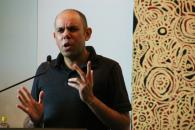 Oliver performing at the BlackWords Symposium, October 2012.See full AustLit entry
Oliver performing at the BlackWords Symposium, October 2012.See full AustLit entryCloncurry-born Stephen Oliver has trained as a dancer, actor and singer at the Aboriginal Music Theatre Training Program and at WAAPA. He is also a performance poet.
The former Assistant Artistic Director at Aboriginal Centre for the Performing Arts, he was one of the creative forces behind Black Comedy for ABC television. In 2016, he scripted his first play, and in 2018, his play From Darkness Whence We Came was produced for the National Playwrighting Festival. In May 2018, he was a featured writer at the NT Writers' Festival.
-
 This image has been sourced from online.See full AustLit entry
This image has been sourced from online.See full AustLit entry'Based on a collection of personal stories, experiences, and reflections, Black Queen Black King explores the lives of four young Indigenous men through song, dance and storytelling. The life experiences, of these very different and complex individuals culminates in a celebration of strength, pride and cultural identity.' Source: http://www.atsis.uq.edu.au/birranews/index.html?page=44689 (Sighted 14/03/2006)
(...more) -
 This image has been sourced from online.'Yvette Walker grew up between North Queensland and Brisbane, with a Scottish father and mother of Aboriginal, Indonesian and Chinese decent. Her heritage is with the Waanyi people of North East Queensland. Making her professional acting debut in 1996 with Kooemba Jdarra in Jack Davis' The Dreamers, Yvette has studied at the Aboriginal Centre for Performing Arts. She has gone on to appear in several stage productions, including 23rd Productions 'Motortown' in August 2008.' Source: www.slq.See full AustLit entry
This image has been sourced from online.'Yvette Walker grew up between North Queensland and Brisbane, with a Scottish father and mother of Aboriginal, Indonesian and Chinese decent. Her heritage is with the Waanyi people of North East Queensland. Making her professional acting debut in 1996 with Kooemba Jdarra in Jack Davis' The Dreamers, Yvette has studied at the Aboriginal Centre for Performing Arts. She has gone on to appear in several stage productions, including 23rd Productions 'Motortown' in August 2008.' Source: www.slq.See full AustLit entry -
Yerrabilela Jimbelung: Poems about Friends and Family by Lionel Fogarty, Kargun Fogarty and Yvette WalkerYvette Walker
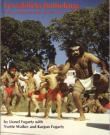 Image courtesy of publisher's website.See full AustLit entry
Image courtesy of publisher's website.See full AustLit entry'Lionel Fogarty is a leading spokesman for Indigenous rights in Australia through a poetry of linguistic uniqueness and overwhelming passion. In resisting the colonising force of English, he has reterritorialised the language of the invaders and made of it a language that speaks for his people. As well as a selection of his recent poems, Lionel introduces works by two young poets, Yvette Walker and his son Kargun Fogarty.' (Source: publishers website)
(...more) -
Lardil and Kaiadilt Songs, Biographical Narratives, Mythology, Material Culture; Kaantju, Olkolo, Koko-Yalandji and Lama-Lama Songs, Mythology, Autobiographical Material recorded by Percy Tresize
See full AustLit entry'Damin language discussed; men's and women's love songs and other songs; initiation songs; string manufacture and use; biographical narratives; weapons and toys; sorcery practices; Bora discussion; site recording; island dance practice; Lardil glosses of sign language; oral history; flood and rain making; tooth evulsion and septum piercing; word lists; didjeridu demonstration.' (Source: Mura Collections Catalogue (AIATSIS))
(...more) -
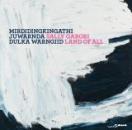 This image has been sourced from online.See full AustLit entry
This image has been sourced from online.See full AustLit entry'This beautifully illustrated publication features works drawn from public and private collections in an exhibition surveying the life and work of the late Mirdidingkingathi Juwarnda Sally Gabori c.1924–2015, the distinguished senior Kaiadilt woman artist from Bentinck Island in the Queensland’s Gulf of Carpentaria.'
'One of Australia’s most extraordinary practitioners, Mrs Gabori was incredibly prolific over her short career. Her indefatigable zeal to communicate her stories, knowledge, and experiences accumulated over an incredible life — spanning over 90 years from traditional life to the coming of the Australian frontier to contemporary globalised Australia — won her great admiration and has left an astonishing cultural legacy.
(...more) -
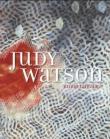 This image has been sourced from online.'Lavishly illustrated, this invaluable study examines the scope and depth of the work of leading contemporary Australian artist Judy Watson. Exploring the plight of the dispossessed, indigenous Australians with whom she shares a family history and heritage, Watsons's works are divided into the seven defining elements within her artistic themes. Each section serves as an extended picture-essay featuring commentary from the artist about her work and travels, as well as objective perspectives by art critics. (...more)See full AustLit entry
This image has been sourced from online.'Lavishly illustrated, this invaluable study examines the scope and depth of the work of leading contemporary Australian artist Judy Watson. Exploring the plight of the dispossessed, indigenous Australians with whom she shares a family history and heritage, Watsons's works are divided into the seven defining elements within her artistic themes. Each section serves as an extended picture-essay featuring commentary from the artist about her work and travels, as well as objective perspectives by art critics. (...more)See full AustLit entry -
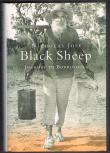 This image has been sourced from online.See full AustLit entry
This image has been sourced from online.See full AustLit entry'This impassioned book - part quest, part travel book - by a novelist and writer widely published in the US and Europe - is based on two interlocking personal histories set on Australia's tropical Gulf of Carpentaria - border-line country seldom explored in writing. A quest for two very different men: the legendary Roger Jose, an itinerant European who lived in a remote Aboriginal community for half a century, in an upside down water tank with his beloved Aboriginal wife, reading literature and evolving his own radical bush philosophy.
(...more) -
References cited
AUSTLANG sighted 16 December 2016 http://austlang.aiatsis.gov.au
Gangalidda and Garawa Peoples. Sighted http://www.nntt.gov.au/Information%20Publications/Gangalidda%20and%20Garawa%20Peoples.pdf
Language Resources for Mount Isa and North-West Queensland, sighted http://www.slq.qld.gov.au/__data/assets/pdf_file/0016/181213/Language-Resources-Mt-Isa-and-North-West-Qld.pdf
Paul Memmott, Chapter 2, The Way It Was: Customary Camps and Houses in the Southern Gulf of Carpentaria, sighted 16 December 2016 http://lryb.aiatsis.gov.au/PDFs/read_ch2.pdf)
McKenzie, Kim, Horton, David, 1945- and Australian Institute of Aboriginal and Torres Strait Islander Studies The Encyclopaedia of Aboriginal Australia: Aboriginal and Torres Strait Islander history. Sighted 16 December 2016. http://web.a.ebscohost.com.ezproxy.library.uq.edu.au/ehost/pdfviewer/pdfviewer?sid=beb6951d-e5e2-4034-a70f-b2a824dbddac%40sessionmgr4006&vid=12&hid=4209)
(McKenzie, Kim, Horton, David, 1945- and Australian Institute of Aboriginal and Torres Strait Islander Studies The Encyclopaedia of Aboriginal Australia: Aboriginal and Torres Strait Islander history. Sighted 16 December 2016. http://web.a.ebscohost.com.ezproxy.library.uq.edu.au/ehost/pdfviewer/pdfviewer?sid=beb6951d-e5e2-4034-a70f-b2a824dbddac%40sessionmgr4006&vid=12&hid=4209) p: 1135
McKenzie, Kim, Horton, David, 1945- and Australian Institute of Aboriginal and Torres Strait Islander Studies The Encyclopaedia of Aboriginal Australia : Aboriginal and Torres Strait Islander history. Sighted 16 December 2016. http://web.a.ebscohost.com.ezproxy.library.uq.edu.au/ehost/pdfviewer/pdfviewer?sid=beb6951d-e5e2-4034-a70f-b2a824dbddac%40sessionmgr4006&vid=12&hid=4209) p: 427-428
McKenzie, Kim, Horton, David, 1945- and Australian Institute of Aboriginal and Torres Strait Islander Studies The Encyclopaedia of Aboriginal Australia : Aboriginal and Torres Strait Islander history. Sighted 16 December 2016. http://web.a.ebscohost.com.ezproxy.library.uq.edu.au/ehost/pdfviewer/pdfviewer?sid=beb6951d-e5e2-4034-a70f-b2a824dbddac%40sessionmgr4006&vid=12&hid=4209) page 568-569
McKenzie, Kim, Horton, David, 1945- and Australian Institute of Aboriginal and Torres Strait Islander Studies The Encyclopaedia of Aboriginal Australia : Aboriginal and Torres Strait Islander history. Sighted 16 December 2016. http://web.a.ebscohost.com.ezproxy.library.uq.edu.au/ehost/pdfviewer/pdfviewer?sid=beb6951d-e5e2-4034-a70f-b2a824dbddac%40sessionmgr4006&vid=12&hid=4209) page 530
Northern Territory, Images of the World http://ozoutback.com.au/Australia/carpentaria/index.html
Ozoutback, sighted 16 December 2016 http://ozoutback.com.au/Australia/carpentaria/index.html
Savanna Explorer sited http://www.savanna.org.au/gc/ 19 December 2016
Wright, Alexis, Carpentaria. Giramondo, Artarmon, N.S.W, 2006:1
You might be interested in...

